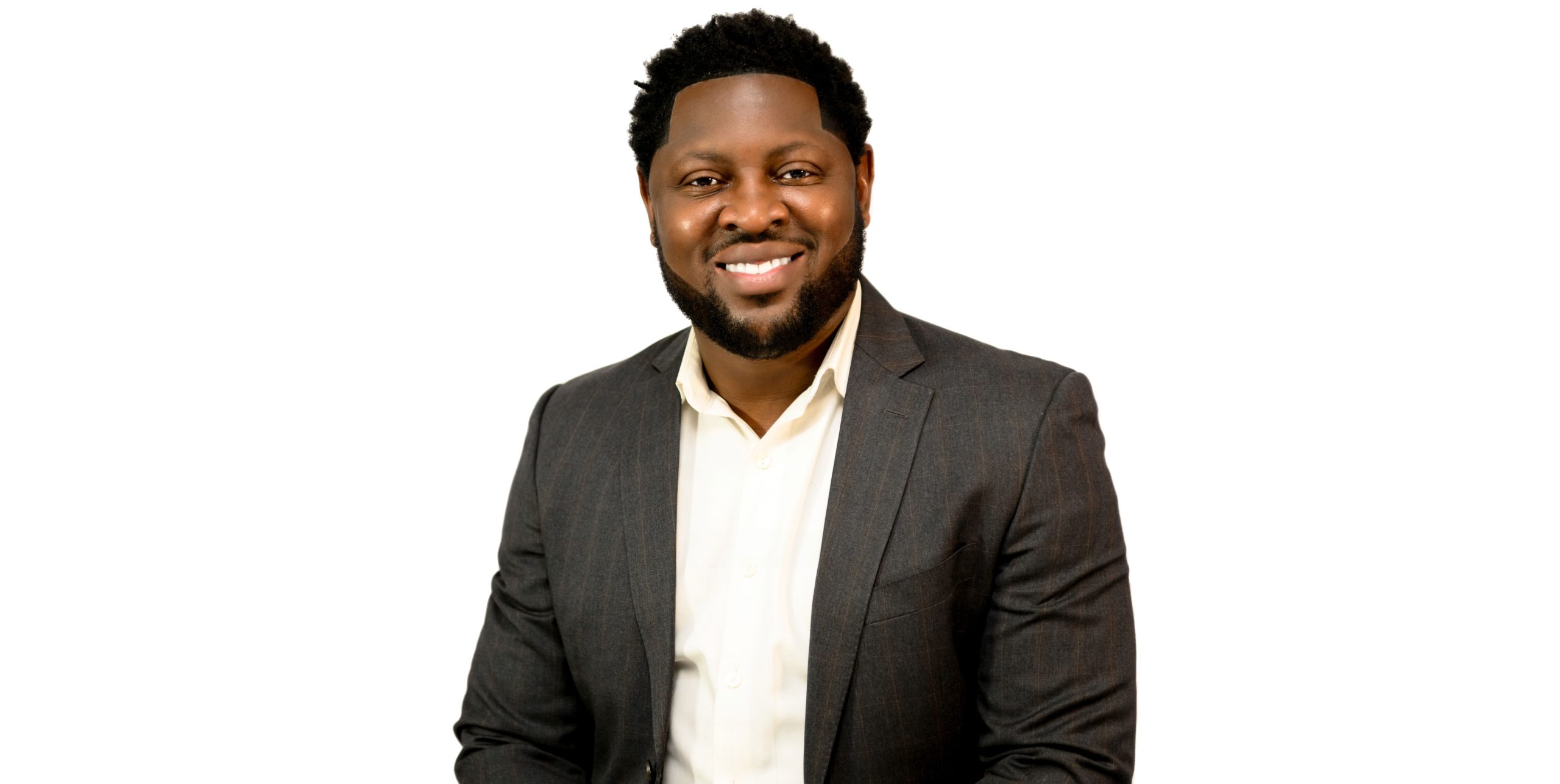General
IWD 2024: It Will Take 50 Years to Close OECD Gender Pay Gap—PwC

By Adedapo Adesanya
A new study from top consultancy firm, PricewaterhouseCoopers (PwC), has shown that it would take more than half a century to close the average gender pay gap across all 33 Organisation for Economic Co-operation and Development (OECD) countries.
To mark International Women’s Day 2024, PwC has released two studies, the Women in Work Index and Inclusion Matters, finding that global progress on achieving gender parity at work continues at a sluggish rate.
Now in its 12th edition, the latest data from the 2024 Women in Work Index (WiW Index) measures progress towards gender equality at work across the OECD, taking in five indicators that frame PwC’s analysis and measure various indicators of gender equality in the workplace, one of which is the gender pay gap.
PwC said that despite some progress over the past decade, this year’s analysis shows there is still a considerable way to go to reach gender parity at work across all five indicators.
Over the last decade, the average Index score increased from 56.3 in 2011 to 68 in 2022. In the latest Index update, the average OECD score improved by approximately two points from a score of 66 in 2021 to 68 in 2022.
Between 2021 and 2022, the majority of the improvement across the OECD was driven by an increase in the female labour force participation rate from 70.8 per cent to 72.1 per cent and a fall in the female unemployment rate from 6.4 power to 5.3 per cent.
However, the average gender pay gap across the OECD widened from 13.2 per cent to 13.5 per cent over this period. This shows that despite greater participation, women remain in a considerably weaker position in terms of labour market returns as compared to men.
Since the inception of the Index in 2011, the gender pay gap has been one of the indicators with the slowest improvement, narrowing only three percentage points between 2011 and 2022 across the OECD.
In terms of country ranking, Luxembourg ranks first on the WiW Index, followed by Iceland and Slovenia. The top five countries on the Index in 2021 continue to rank in the top five in 2022, but the ordering has changed.
Luxembourg’s strong performance was driven by an improvement on all indicators and especially by the fact that the country continues to have the lowest gender pay gap across the OECD. At -0.2 per cent, Luxembourg’s gender pay gap is negative, meaning that on average, the median level of pay is higher for women than men. The Nordic countries, Finland, Norway, Denmark, Sweden and Iceland, all appear in the top 11.
Mexico has scored the lowest on the Index since 2018. Its poor performance in 2022 was mainly driven by a high gender pay gap of 17 per cent along with a low female labour force participation rate of 50 per cent compared to a 14 per cent gender pay gap average across the OECD and a 72 per cent female participation rate.
Australia recorded the biggest improvement in its rank, rising seven places from 17th place in 2021 to 10th place in 2022, with a 6.6-point increase in its Index score. This was driven by an improvement across all five indicators and in particular, the gender pay gap, which fell from 14.2 per cent in 2021 to 9.9 per cent in 2022.
Conversely, the UK experienced the largest fall in the ranking, dropping four places from 13th in 2021 to 17th in 2022. This was largely a relative change despite a 1.1 point increase in the UK’s Index score, implying that the UK is being outpaced by other countries in terms of progress made towards achieving gender equality at work. The UK’s gender pay gap also increased from 14.3 per cent in 2021 to 14.5 per cent in 2022.
PwC’s Inclusion Matters research confirms that disparity in pay is a pain point for women in the workplace. It found that only 39 per cent of women feel they are being fairly rewarded financially for their work.
PwC drew insights from its Global Hopes and Fears Survey 2023, to compile the Inclusion Matters research, sharing fresh gender-focused perspectives from close to 54,000 workers globally, almost 23,000 of whom are women.
The research includes a Workplace Inclusion Indicator Index that measures three key dimensions of inclusion: belonging, fairness, and inclusive decision-making – and found that a statistically significant gender gap in favour of men.
The research found that there is a significant gap between the inclination of men and women to ask for promotions (-9 points) and pay raises (-8 points). However, women with Inclusion Index scores in the top quartile are 1.4 times more likely to ask for a raise, and 1.5 times more likely to ask for a promotion. They are also 2.2 times more likely to recommend their employer as a place to work.
Women’s turnover intentions increased (+8 points) this year with one in four women planning to change employers in the next 12 months, just slightly below the turnover intention rate for men at 27 per cent. Highlighting a further reason why inclusion matters, women with higher inclusion scores are 1.2 times less likely to change employers.
The report also finds that inclusion is positively correlated with self-driven development and women feeling higher levels of inclusion are 1.7 times more likely to be actively seeking out opportunities to learn and develop new skills.
It was also found that inclusion supports greater readiness from women to future-proof their careers which will be critical in driving gender equity gains at work. Women with high inclusion scores foresee greater benefits to their jobs from AI (+6 points), have a clear sense of how the skills their jobs require will change in the next five years (+14 points), and are more confident their employers will support with upskilling on key development skills (+21 points).
Both women and men who have hybrid work patterns – defined as having a mix of in-person and remote working – have the highest inclusion scores when it comes to work patterns. Women with higher inclusion scores are also less likely to be feeling the impact of overwork and 1.4 times less likely to say their workloads are frequently unmanageable.
It was also confirmed that job level matters as women in senior executive and management positions felt significantly higher levels of workplace inclusion than women in non-management positions (+9 points).
Millennial women feel the highest level of inclusion in the workplace, followed by Gen Z. However, Gen Z is the only generation where women feel similarly included to men.
Women working in the technology industry had the highest Inclusion Index score across all 26 industries included in the research and were one of only four industries for which women had slightly higher inclusion scores than men.
Speaking on the result, Ms Olusola Adewole, Partner and Workforce Transformation Leader, West Market Area, PwC, said “At PwC, we truly believe that inclusion matters in driving progress towards gender parity. Our research shows workplace inclusion is an important lever in propelling women’s development and advancement. A workplace where women feel that they belong, are included in decision-making, and are treated equitably is a workplace where they can thrive.”
General
Lagos to Get New Building Code in 2025

By Adedapo Adesanya
The Lagos State Government has expressed its readiness to get a brand-new Building Code next year, to achieve the high-performance standards needed to make Lagos a sustainable and Smart City.
The government’s readiness was disclosed at the Lagos State Executive Council Retreat on the Domestication of the Lagos Building Code, organised by the Office of the Special Adviser on e-GIS and Urban Development, held at Ikeja GRA on Wednesday.
Speaking during the retreat, Lagos State Governor, Mr Babajide Sanwo-Olu emphasised the need for more collaboration among all the ministries and agencies in the built sector, to ensure the state development in line with global best practices.
He said the motive behind the Lagos Building Code is to have a building regulation that would make Lagos much more resilient.
“We (Lagos State Government) are the first to domesticate the National Building Code, which is the creation of the Federal Government. We are not doing anything outside the vision at the sovereign and sub-sovereign levels. But what is unique about our own is the fact that all the cabinet members see the need to have an input because it would be an outcome that would affect lives and different ministries and agencies.
“So, there is a need for everybody to have a say, and at the end of the day, collectively we will resolve to have a way.
“What we are trying to do is for Lagos State to do what is obtainable internationally: have a building regulation in which we have a standard of construction in design, manner of land use occupancy, and use of building materials, which we believe would eventually improve and help with health, safety, and occupancy issues.
“It is all about building sustainably, making Lagos a lot more resilient and able to absorb shock in the future and able to stand in the comity of developed cities and city-states as we see in various parts of the world,” he said.
The Special Adviser to the Governor on eGIS and Urban Development, Mr Olajide Babatunde, stated that the Lagos Building Code is to complement the existing regulatory framework and provide a comprehensive solution to the challenges of land use, physical development, and urban planning.
Mr Babatunde said the Lagos Building Code will regulate building control, planning permission, and address the issues of setbacks; take care of the safety and sustainability of the environment; and also prevent the collapse of buildings.
“We have been working on the domestication of the National Building Code, and by next year, we are going to have our own brand-new Lagos Building Code. We have worked with professional bodies and people from academia, market women, and the public in general, and through a participatory approach, we can come out with a document that is acceptable to everyone and useful to the entire state,” he said.
Also speaking, the Special Adviser to the Governor on Infrastructure, Mr Olufemi Daramola, described the Lagos State Building Code initiative by the Babajide Sanwo-Olu administration as the next step to Green Lagos that will enable the state to plan buildings properly and ensure durable infrastructure in the state.
During the retreat, members of the Lagos State Executive Council brainstormed and advocated aggressive sensitisation for residents of the State on the Lagos Building Code before implementation.
General
Apostle Femi Lazarus Emerges Most Streamed Podcast in Nigeria on Spotify

By Modupe Gbadeyanka
A report released by Spotify has revealed that in 2024, Apostle Femi Lazarus was the most streamed podcast on its platform, closely followed by Motivation Daily by Motiversity.
Podcasts are one of Africa’s favourite ways to tell stories. With almost 4 billion minutes of podcast audio played in Sub-Saharan Africa in 2024, the continent’s appetite for this content is loud and clear.
South Africa, Nigeria, and Kenya listened to the most shows this year, with South Africa contributing over 2 billion minutes. If you started playing podcasts on one device today, it would make for about 30 centuries of listening.
“The numbers don’t lie. Podcasting is here to stay because it lets creators take control of their narratives and tell these stories on their terms while bringing their community along for the journey,” the Sub-Saharan Africa Podcast Manager for Spotify, Ncebakazi Manzi, stated.
Motivational shows around issues like managing finances, relationships, personal goals and health remain popular across the three leading countries. Shows like “The Diary Of A CEO with Steven Bartlett”, “Motivation Daily by Motiversity” and “The Success Addicted Podcast” have attracted listeners who want to get their lives in order and learn from the stories of inspirational people.
Audiences in Nigeria and South Africa embrace shows about spirituality. “Christian Motivation” had one of the most shared episodes in South Africa while “Apostle Joshua Selman” maintained his popularity in Nigeria for another year. As the continent’s second-largest podcast market, Nigeria listened to 700 million minutes in 2024 and it created half of the new shows published in Sub-Saharan Africa this year.
Even though spirituality dominated Nigeria’s top charts, the continued popularity of shows like “I Said What I Said” and “The HonestBunch Podcast” tell us that listeners also want conversation-style shows. Listeners in Kenya and South Africa also showed an affinity toward these shows.
A good laugh with friends
The “ShxtsnGigs” podcast, an opinion show hosted by two best friends James and Fuhad, tapped into audiences’ hunger for conversational shows. The humorous podcast has made its way to the top charts in six of the top 10 podcast-playing African countries. In Kenya, The 97s Podcast has been inspired by this approach where funny and frank chats between hosts Trevor, Frank and Dante have led the podcast to take the number-one spot in the country for the first time.
Kenya’s broader listening data shows that relationships are a meaningful taking point. Seven of the 10 most shared episodes in the country discuss love, sex lives and dating. Julia Gaitho’s “So This Is Love” holds three out of the top five most shared podcast episodes in the country. Her interviews resonated because she draws lessons from her guest’s stories about lost lovers.
Some listeners just wanted to laugh through the pain. Ensemble shows like “Mic Cheque Podcast” and “The Sandwich Podcast” made Kenyans feel like they were hanging out with a close circle of friends. When difficult topics come up, moments of infectious laughter help lighten the mood.
Women creators like Murugi Munyi, Julia Gaitho, Sharon Machira and Lydia K.M. take this comedic approach to a new level on shows like “The Messy Inbetween” and ‘It’s Related, I Promise’. This genre contributed heavily to the country’s 400 million podcast minutes streamed in 2024.
Below are the most streamed and shared podcasts for the year;
|
TOP STREAMED PODCASTS IN SOUTH AFRICA |
TOP STREAMED PODCASTS IN NIGERIA |
TOP STREAMED PODCASTS IN KENYA |
|
2. Motivation Daily by Motiversity 3. Success Addicted Podcast with the voice of Earl Nightingale ; Napoleon Hill ; Jim Rohn and many more |
|
TOP SHARED PODCAST EPISODES IN SOUTH AFRICA |
TOP SHARED PODCAST EPISODES IN KENYA |
TOP SHARED PODCAST EPISODES IN NIGERIA |
|
|
|
General
Watt Renewable Secures $15m Loan for Hybrid Solar Power Plants in Nigeria

By Dipo Olowookere
A $15 million debt facility has been obtained by Watt Renewable Corporation from the AfriGreen Debt Impact Fund to finance hybrid solar power plants to be built and operated by the former, especially in Nigeria.
WATT intends to use the projects to serve commercial and industrial clients in Nigeria, particularly in the telecommunication and financial services sectors.
By integrating solar hybrid solutions, the firm aims to significantly reduce diesel consumption and CO2 emissions, enabling its clients to achieve substantial energy cost savings while promoting environmental sustainability.
As a pioneer in renewable energy solutions, WATT continues to drive innovation in Nigeria’s energy sector.
The company’s robust roll-out plan includes deploying hundreds of hybrid solar power sites nationwide to meet the growing energy demands of commercial & industrial clients.
This strategic expansion aligns with WATT’s vision to revolutionize energy access across Africa, enabling sustainable development and reducing reliance on fossil fuels.
The funds from AfriGreen provide the critical capital needed to accelerate WATT’s ambitious projects, strengthening its market position and empowering businesses with reliable and affordable energy solutions.
Business Post gathered that to mitigate the currency risk for WATT in the event of devaluation of the Nigerian Naira, AfriGreen is offering a local currency facility that matches the payment structure of the power purchase agreements.
“We are thrilled to partner with AFRIGREEN on this transformative journey to expand reliable and sustainable energy solutions across Africa.
“With this support, it enables us to accelerate our shared mission of providing hybrid solar power to businesses, reducing carbon emissions, and supporting economic growth while enhancing energy security for our clients,” the Managing Director of WATT, Mr Oluwole Eweje, said.
“We are delighted to support WATT in rolling out hundreds of hybrid sites across the country.
“This represents another key transaction for AFRIGREEN in Nigeria. The combination of high energy prices, good solar irradiation, and strong demand from industrial and commercial energy users makes this market particularly attractive for companies like WATT.
“By leveraging these favourable market conditions alongside WATT’s exceptional operational performance and a well-structured financing solution, we are setting the stage for a strong and lasting business partnership,” the Managing Director of AfriGreen, Mr Alexandre Gilles, stated.
-

 Feature/OPED5 years ago
Feature/OPED5 years agoDavos was Different this year
-
Travel/Tourism8 years ago
Lagos Seals Western Lodge Hotel In Ikorodu
-

 Showbiz2 years ago
Showbiz2 years agoEstranged Lover Releases Videos of Empress Njamah Bathing
-

 Banking6 years ago
Banking6 years agoSort Codes of GTBank Branches in Nigeria
-

 Economy2 years ago
Economy2 years agoSubsidy Removal: CNG at N130 Per Litre Cheaper Than Petrol—IPMAN
-

 Banking2 years ago
Banking2 years agoFirst Bank Announces Planned Downtime
-

 Sports2 years ago
Sports2 years agoHighest Paid Nigerian Footballer – How Much Do Nigerian Footballers Earn
-

 Technology4 years ago
Technology4 years agoHow To Link Your MTN, Airtel, Glo, 9mobile Lines to NIN






















